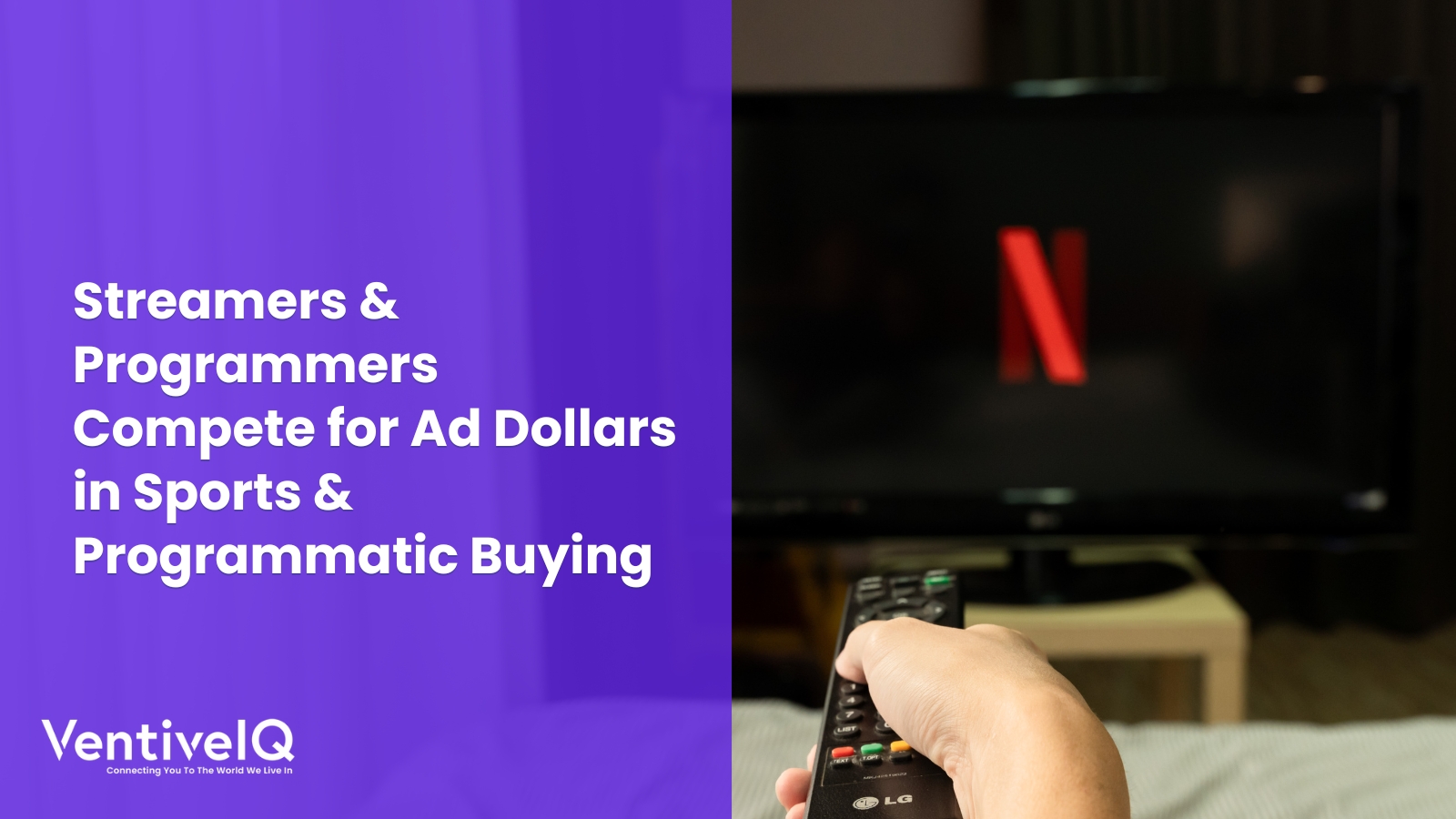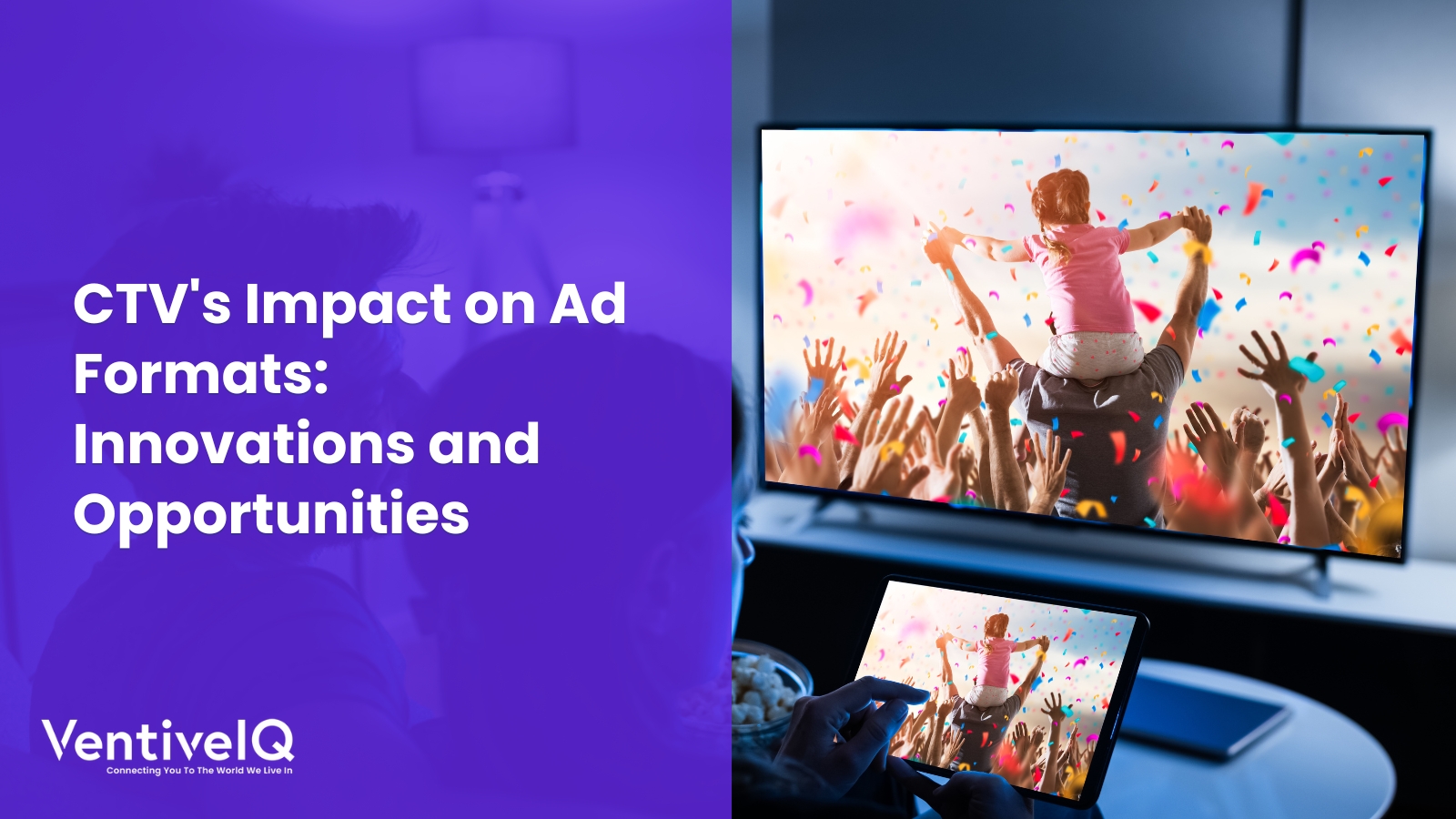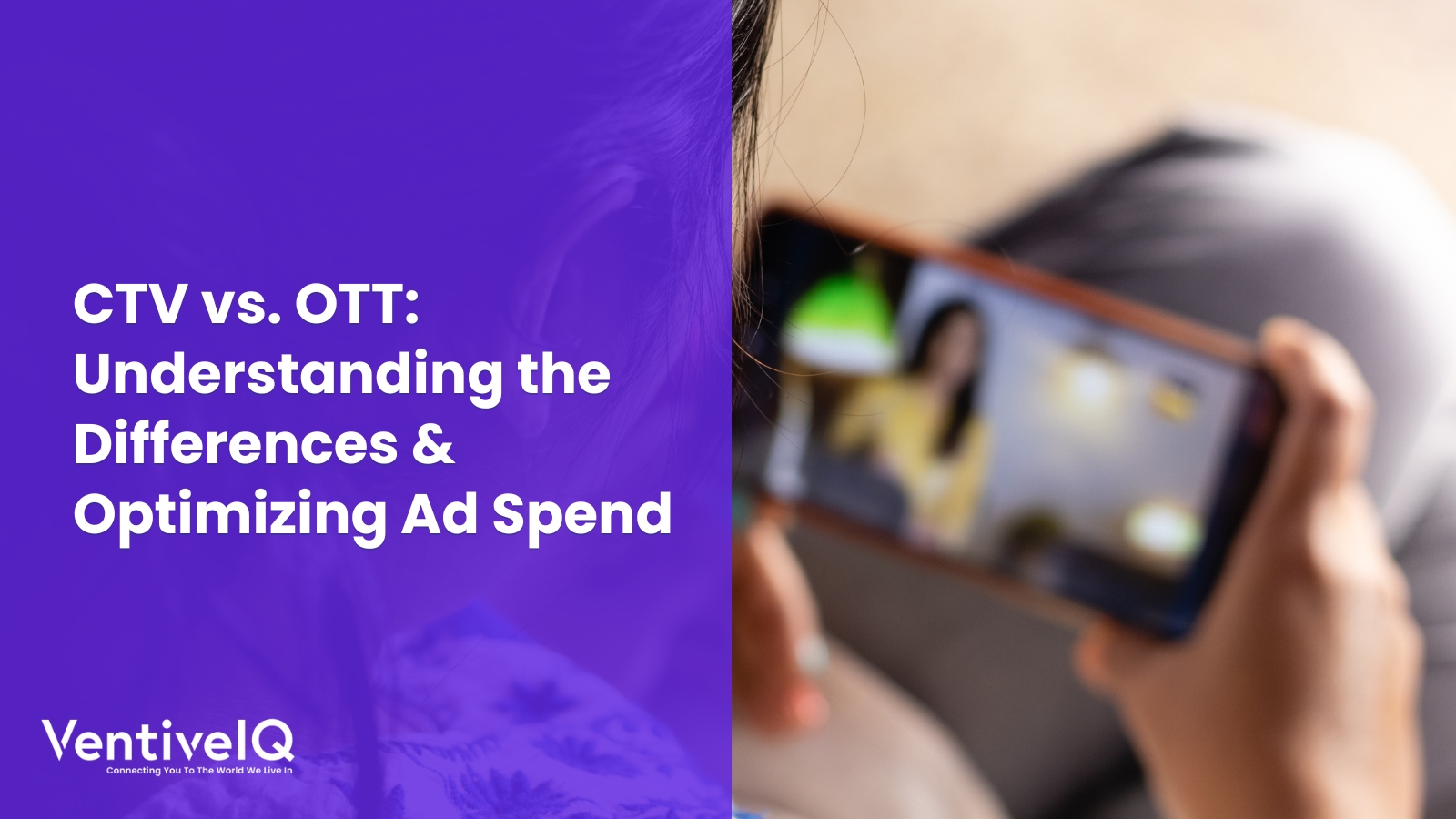Discover how CTV metrics go beyond impressions to measure true campaign effectiveness, exploring key factors, tradeoffs & challenges in optimizing CTV advertising.
Introduction
The world of advertising is experiencing a significant transformation. With the surge of cord-cutting and the widespread use of streaming services, Connected TV (CTV) has become a potent marketing channel. Understanding CTV metrics goes beyond simply counting impressions – it is about measuring the actual effectiveness of your campaigns. Here at VentiveIQ, we are committed to helping businesses unlock the full potential of CTV advertising.
This article explores the world of CTV metrics, exploring the limitations of impressions and guiding you toward a more comprehensive approach to measuring campaign success. We will discuss key factors, tradeoffs, and challenges associated with various measurement approaches. This will empower you to make informed decisions for maximizing your return on investment (ROI) in the dynamic world of CTV advertising.

Why Impressions Don’t Tell the Whole Story
Impressions, a measure of how often your ad is displayed, are frequently used as the primary metric for CTV campaigns. However, focusing solely on impressions provides a limited view of campaign effectiveness. Here is why:
- No Guarantee of Viewability: An impression does not guarantee that viewers will see your ad. They might have been multitasking, skipped the ad segment, or had their attention diverted elsewhere.
- Limited Insights into Engagement: Even if viewers see your ad, impressions need to tell you more about their level of engagement. Did they pay attention to the message? Did it resonate with them? Impressions offer no clues about the ad’s impact.
These limitations highlight the need for a more nuanced approach to measuring CTV campaign effectiveness.
Unveiling Effective CTV Metrics
Moving beyond impressions, let us explore some key metrics that provide a more comprehensive picture of your campaign’s performance:
- Completion Rate: This metric measures the percentage of viewers watching your ad. A high completion rate indicates strong engagement with your message.
- Viewability Rate: This metric goes beyond impressions by measuring the percentage of viewers who had the opportunity to see your ad. A high viewability rate ensures your ad is displayed in a way that viewers can see it.
- Click-Through Rate (CTR): This metric measures the percentage of viewers who click on a call to action (CTA) within your ad. A high CTR indicates success and creativity that compels viewers to take the desired action.
- Frequency: This metric tracks how many times a viewer sees your ad. While some repetition can benefit brand recall, excessive frequency can lead to ad fatigue and negatively impact viewer perception.
- In-Market Targeting: By incorporating audience targeting data, you can ensure your ad reaches viewers actively interested in your product or service. Increasing engagement and conversion is more likely with this approach.
These metrics and impressions provide a more holistic view of your campaign’s effectiveness. However, it is essential to remember that tradeoffs are involved when choosing your measurement approach.

Balancing Measurement Strategies: The Tradeoffs
There is no single “perfect” metric for every CTV campaign. The ideal approach often involves a strategic balance between metrics depending on your goals. Here are some tradeoffs to consider:
- Cost vs. Reach: Focusing on impressions can reach a wider audience but may not guarantee engagement. Targeting metrics like in-market viewers might reach a smaller audience but with a higher likelihood of conversion, potentially justifying a higher cost.
- Short-Term vs. Long-Term Goals: Metrics like CTR and completion rate offer insights into immediate audience response. However, brand awareness metrics, such as ad recall surveys, might show negligible impact but can be crucial for long-term brand building.
Challenges and Considerations for Effective Measurement
Measuring CTV campaigns effectively comes with its own set of challenges. Here are some essential factors to consider:
- Data Fragmentation: The CTV landscape is fragmented, with different platforms having their measurement systems. This makes obtaining a unified view of campaign performance difficult across various platforms. Here, data providers like VentiveIQ can be instrumental in consolidating data and offering a holistic picture.
- Privacy Regulations: With increasing privacy regulations, tracking individual user behavior across platforms is becoming more complex. This necessitates shifting towards privacy-compliant measurement solutions that leverage anonymized and aggregated data while providing valuable insights.
- Attribution Modeling: Attributing conversions to specific touchpoints within a marketing campaign can be challenging. Advanced attribution models can help understand how CTV ads interact with other marketing channels to influence conversions.
VentiveIQ: Your Partner in Effective CTV Measurement
At VentiveIQ, we understand the complexities of CTV measurement. We provide a comprehensive suite of data solutions beyond impressions, enabling you to track engagement, brand impact, and campaign performance across platforms. Our team of experts can help you define your goals, select the right metrics, and optimize your CTV campaigns for maximum ROI.

Conclusion
As CTV continues to grow as a vital advertising platform, understanding the actual effectiveness of CTV campaigns goes beyond traditional metrics like impressions. Advanced CTV metrics such as viewability, completion rate, CTR, conversion rate, audience demographics, and incremental reach provide a more comprehensive picture of campaign performance. However, balancing these metrics involves tradeoffs and challenges, including viewership fragmentation, data privacy, attribution complexity, ad fraud, and evolving technology.



